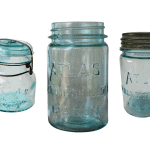Like most old canning jars, Atlas Mason jars can be significantly valuable. Moreover, the age of an Atlas Mason plays a significant role in determining its value. The older an Atlas Mason jar is, the more valuable it is.
However, finding old and well-aged Atlas Mason jars is quite a tough experience. Therefore, you need to learn how you can spot one or two in your collection or an antique shop. Thus, this guide is here to help you know how to date and value Atlas Mason jars.
Assuming you are a collector or an old canning enthusiast, this guide will help you achieve you learn more about these old cans. Additionally, you will also learn how to value them, among other relevant and helpful tips.
What is an Atlas Mason Jar?
Hazel-Atlas Glass Company was the company responsible for producing authentic Atlas mason jars. The company was operational for over 60 years from 1902 to 1964 and produced the aforementioned glass jars during that time. These jars were some of their most significant productions at the time.
After its reign ended, other companies picked up the idea and continued producing the Atlas Mason jars. When this happened, the jars were useful for packaging the Classico pasta sauces.
Initially, all the Hazel-Atlas jars only had the Atlas named embossed across them. This was to denote the brand unlike using the full name Hazel-Atlas. Additionally, these jars came in different styles and designs as well, which made them stand out on the market. Besides that, there were also many Atlas bottles created at the time, which made it harder to find the authentic ones.
However, authentic Hazel-Atlas mason jars had the letter ‘H’ stamp on them with a capital letter ‘A’ resting just underneath. Figuratively, most Atlas mason jars price values range from as low as $10 to a maximum of about $60 or higher. However, the valuation depends on many factors with age and condition playing significant roles in the valuation process.
You can use Atlas mason jars for canning or packaging different dry items that are in good conditions.
How to Identify an Atlas Mason jar?
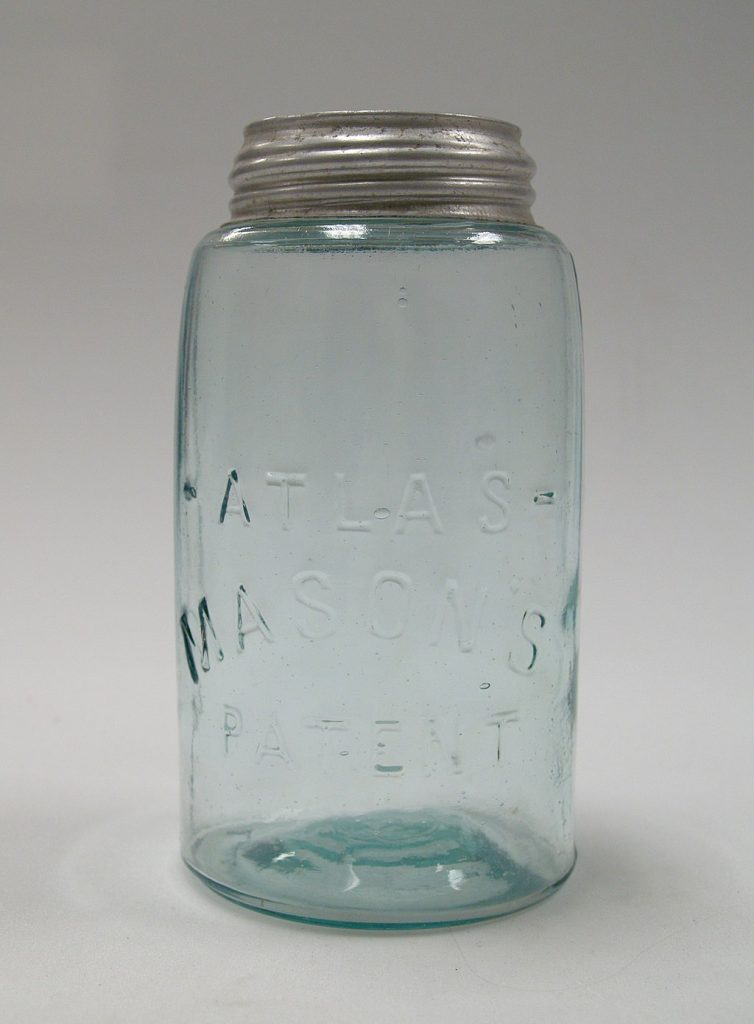
Because there are multiple canning jars available in antique shops, yard sales, and flea markets, it can be hard to find an original Atlas Mason jar. However, the process is not as hard as it may seem or sound.
As explained earlier, an Atlas Mason jar has a distinctive signature or making that sets it apart from other old canning bottles. Therefore, finding them might be less of a tussle but only if you search for the specific hints.
That said, below are some of the observations you need to make if you want to know how identify an Atlas Mason jar:
- Look at the bottom of the bottle – One of the best and most effective ways to identify an Atlas Mason jar is by checking the bottom of the bottom. If it is an authentic Hazel-Atlas glass bottle, then you should see an ‘A’ right beneath the letter ‘H’ as explained earlier. Note that both letters exist in the capital letter form and no other format at all.
- Examine the writing – Another effective way of identifying an authentic Atlas Mason jar is by examining the writings on the jar. An authentic Atlas Mason jar features an ‘Atlas’ named just across its mid-body part. If you miss that, a ‘Hazel-Atlas’ glass mark on the bottle’s side is also a sign or mark of authenticity.
- Observe the color – Noting the color of the bottle is also another effective approach to identifying an Atlas Mason jar. The standard colors of an Atlas Mason jar is either aqua or clear. However, you may also find an authentic or fake Atlas Mason jar with different colors. Determining its authenticity will need you to check the writing on the bottle accurately.
When you apply the three steps above, you’ll not only be able to find an authentic Atlas Mason jar, but you’ll also have a great experience during the process. After finding your desired jar (s), dating them becomes the next thing to do.
Dating Atlas Mason Jars
Like some antique canning jars, most, but not all, Atlas Mason jars also have dates on them. However, it isn’t always a good idea to rely on those dates, especially if you are a collector.
That’s because you may easily find yourself with a recently made jar but with older dates on them. This happens a lot, because some greedy individuals know the value of an older Atlas Mason jar as opposed to a new one.
Therefore, you need to be very vigilant to avoid getting scammed, which is an experience I understand you do not want to go through. To help you through the process, below are some of the tips you can use for dating an Atlas Mason jar.
Check for Mold Seams
Mold seams are usually signs that come up from the jar’s construction process. Actually, most if not all Atlas jars have seams on them and you can use them for dating the jar. For example, an Atlas Mason jar may be considered too old if the mold seams aren’t visible anymore.
It’s also good to know that any Atlas Mason jar that was made before 1915 didn’t have any visible seams because they were hand finished.
Survey the Texture of the Jar
Checking the texture of the glass is another effective way that you can use for dating an Atlas Mason jar. You can do this by running your fingers lightly on the jar’s surface to feel the texture. When you do this, you’ll feel chips and nicks on the glass but this is totally normal and not an age determining factor.
What you need to check or feel are ripples and waves on the glass, while running your fingers on its surface. If the jar has any of the two texture feels, then you might be dealing with an old Atlas Mason jar. That’s because newer models have uniform glass texture unlike the older designs.
Check the Name
The name on an Atlas Mason jar is a great age determinant as well. When checking the name to date your jar, you want to look at two names. These are “Atlas” or “Atlas Mason”.
Older jars made by the Hazel-Atlas company had the Atlas name on them, while newer models of the jar had the Atlas Mason name on them. Therefore, it’s highly unlikely to find an older jar with the Atlas Mason name on it.
With those factors in both mind and practice, the process of dating Atlas Mason jars becomes an easier job to handle.
How to Determine the Value of Atlas Mason jar
According to my knowledge, most Atlas Mason jars go for about $15 or an even lower amount. But as pointed out earlier, this depends on many factors surrounding the jar. Besides that estimation, you may find jars that cost way more.
If you have an old, authentic Atlas Mason jar, then you might have a very valuable item sitting in your house. Remember, the older your jar, the more valuable it can be. Therefore, you should have it checked by a professional if you think you have an old and valuable Atlas Mason jar.
With that in mind, the following are some of the things you can check on to determine the value of the Atlas Mason jar.
Assess the Condition of the jar
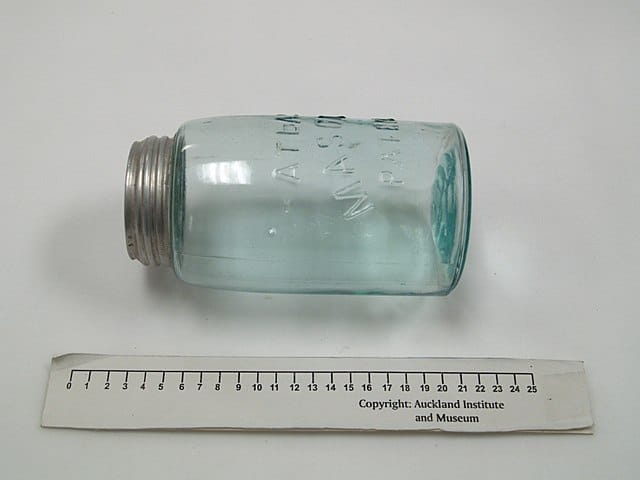
The condition of your jar plays a significant part when determining its value on the market. That’s why it is necessary to examine your jar’s condition before anything else is used to determine its value.
With all other factors staying equal or at an average, an Atlas Mason jar in good condition is worth more. When you assess your jar’s condition, understand that the manufacturer’s defects don’t have anything to do with it. Moreover, any defects that the manufacturer of the bottle is responsible for should not affect your bottle’s value.
This means that any wavy texture or bubbles in the Atlas Mason jar should not detract any value from your bottle. Instead, you should look for the following when assessing the condition of an Atlas jar:
- Chips
- Cracks of any kind
- Scratches
- And any other damage signs
Those are some of the things that you should be checking when assessing your jar’s value. They are owner-initiated results and determine the jar’s condition.
Therefore, the more damage signs your jar has, the less valuable it is. That’s because a jar in a bad or below average condition may end up wearing out faster than the one in good condition.
As a result, collectors or buyers of this product are reluctant to buy such a jar at a more expensive price. But if your jar has been around for long and you have managed to keep it in a decent condition, you may value it for much more than $15.
You can also apply this concept when buying an Atlas Mason jar. Check the condition of the jar thoroughly before taking it home with you. It will help you avoid any disappointments going further.
Better yet, you will have a bargaining advantage whenever you are trying to buy another Atlas Mason jar.
Examine the Styles
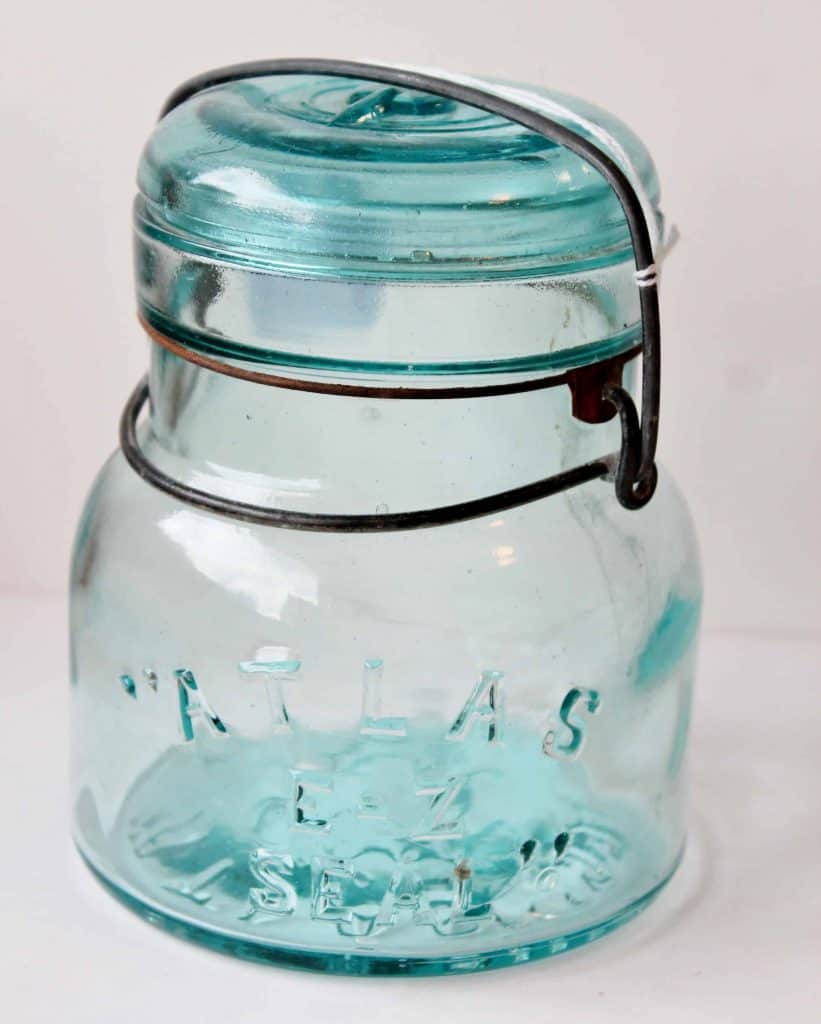
As you may know or already seen, Atlas jars come in a variety of styles and not all of them are as valuable. The following are some of the different styles that you should check for and their effect on the jar’s value.
Atlas E-Z Seal
The E-Z seal Atlas jar is the first style you need to look for. It is round and features a bail and an integrated glass top or lid. It’s called an Atlas E-Z seal because you can find the “E-Z” stamp right below the “Atlas” name just across the jar.
Moreover, the E-Z seal Atlas jar comes in the following forms:
- Pint
- Half-pint
- Quart
- Half-gallon sizes
According to Lovetoknow.com, the earliest E-Z seal Atlas jars are from the year 1910. These jars were made from the amber glass material and are among the most valuable Atlas Mason jars on the market.
Atlas Trademark Mason
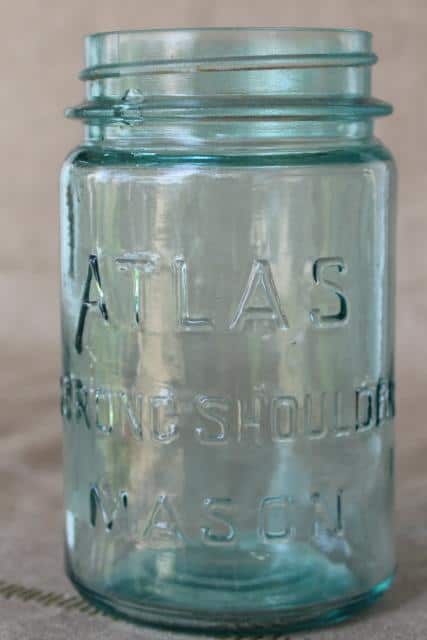
Like the first option, this Atlas Mason jar also comes in pint, half-pint, half-gallon sizes, and quartz as well. On its body, you can find the capital letter H sitting over the capital letter A right between the Atlas and Mason trademark names.
Like most jars of its kind, the older an Atlas Trademark Mason jar is, the more valuable it can be on the market. However, the condition is still a significant determinant as well.
Atlas Strong Shoulder Mason
The third style of an Atlas Mason jar that you should look for is the Atlas Strong Shoulder Mason jar. The “strong shoulder” is just a ledge higher than the rounded shoulder of this jar but underneath the screwing threads on top.
Strong shoulder Mason jars are available in many sizes and this style makes them more valuable to the market. That is if the jar is in the right condition after aging well.
Color
The color of an Atlas Mason jar is another great way of determining the value of an Atlas Mason jar. Generally, exotic colors on Atlas jars are likely to be more valuable compared to just the normal colors.
Such exotic shades include:
- Green
- Amber
- And purple
Atlas Mason jars with any of the above exotic shades cost a lot more on the market compared to other colors. However, you should check thoroughly for the authenticity of the colors to avoid buying a fake.
There are greedy sellers out here who are just interested in your cash and not your passion for collecting. You should also remember to check for the bottle’s condition, I cannot stress this one enough.
Compare the Prices of Different Atlas Mason jar
Lastly, you can compare the recent sales prices of different Atlas Mason jars to determine the value of your bottle. However, you should stay away from comparing your jar to the ones currently listed for sale.
This is because sellers these days may quote individual prices depending on different factors. As a result, it would be hard to find a uniformity in how they value their products. Now that won’t be helpful at all to you when valuing your jar.
Note that the actual price of an Atlas Mason jar is a more accurate measure. To help you understand better, below are some Atlas Mason jar sales price:
As you’ve seen, there are multiple ways to determine the value of an Atlas Mason jar. Regardless of the type or color you have, the condition of the jar remains the most significant determining factor.
The Beauty of Atlas Mason Jars
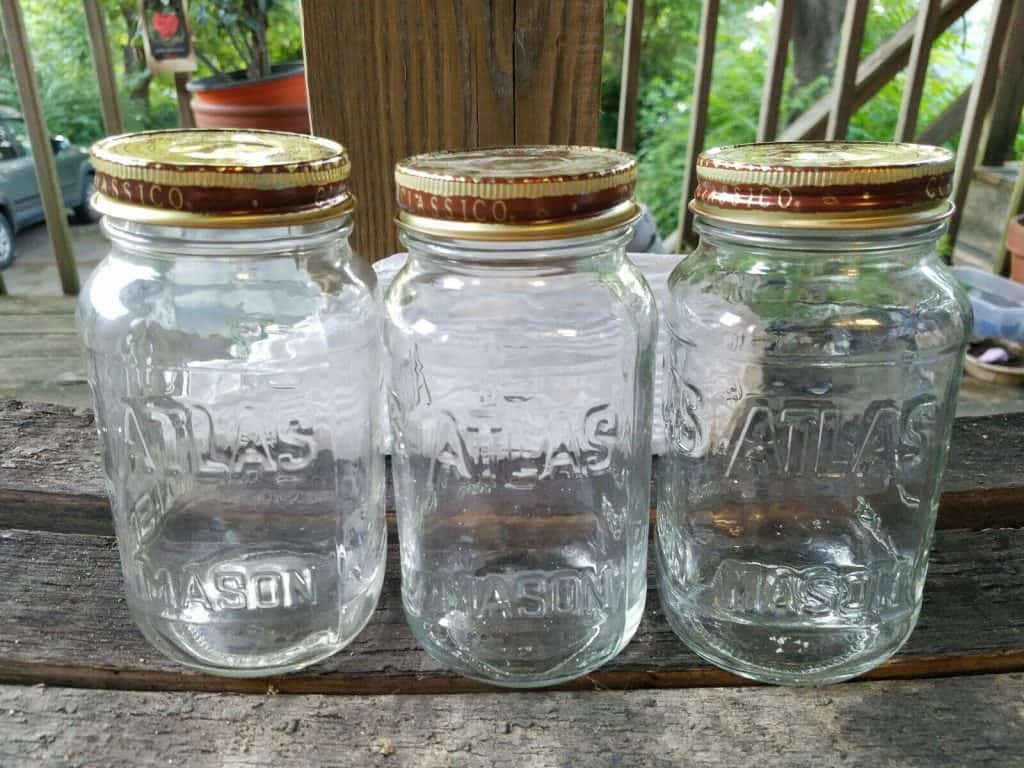
When you come across this jar, you are instantly reminded of how things used to be a long time ago. They have a nostalgic effect on people as they picture life years gone by. These jars were full of life during our grandmother’s times. They were in great use for storing jams, vegetables, as well as other preserves.
As much as these jars were made many years ago, you will be surprised to learn that thousands of them are still being used. They are affordably available in thrift shops, garage sales, as well as in flea markets. You will find that people who love them will strategically get them there as they will not dig too much deep into their pockets.
Most people will actually use these antique jars without the knowledge that they are very old.
Conclusion
Dating Atlas Mason jars is something that requires in-depth knowledge on the product. However, it isn’t rocket science at all and you can manage to value your jar based on the knowledge we have shared above. You will really get to appreciate the great value of Atlas Mason jars when you can date them.
You need to take your time and don’t rush the process if you want the best experience and results. Again, whether valuing your Atlas Mason jar or looking for some to buy, the condition of the jar should be your primary concern before looking at other value determining factors.



